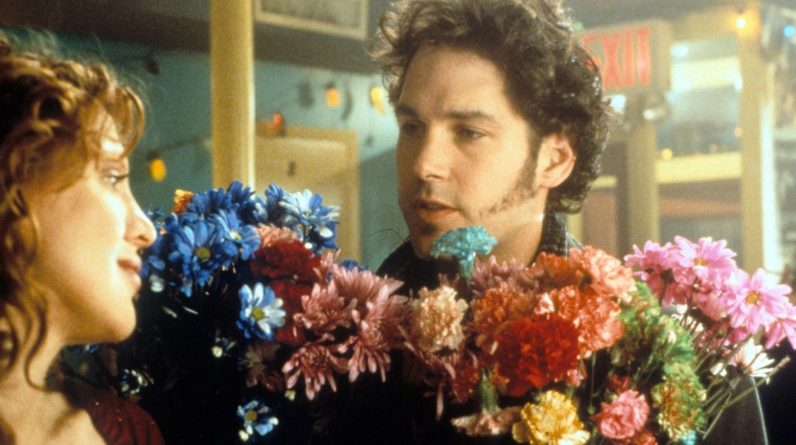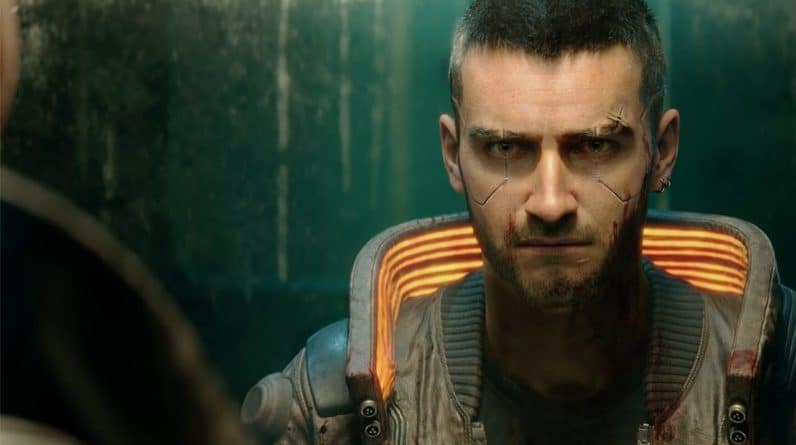
A cork pops. A ball drops. Fireworks paint the night sky. Another new year is about to begin, and for a moment, at least, New Year’s Eve represents all the new year’s potential for hope, love, and even despair. Because of the heightened emotions of the transition between one year and the next, New Year’s Eve has been used as a dramatic backdrop in movies since the birth of cinema. Movies set on this most auspicious of nights explore these emotions in so many ways: There’s the hope of redemption in classic films like The Phantom Carriage and One Way Passage, or the prospect of a new life and new love, like in the romantic comedies When Harry Met Sally… or While You Were Sleeping. And sometimes, New Year’s Eve stories are as simple as the anticipation of a rockin’ year-end party, like in the ensemble comedies 200 Cigarettes and New Year’s Eve. Like the endless covers of “Auld Lang Syne” over the years, there’s more than one poignant way to use New Year’s Eve to push characters forward into new lives.
Frequently, New Year’s Eve is a symbolic setting where redemption seems possible. Victor Sjöström’s silent 1921 film The Phantom Carriage suggests hope and despair are two sides of the same coin. The film tells of an old legend: the first person to die in the new year must drive Death’s carriage. Through a series of flashbacks within flashbacks, Sjöström uses this legend to paint a story of two men gone astray, and the power of goodness to bring one of them back. It’s a story of new beginnings, both in life and in death. Similar themes play out explored in the pre-Hays Code romance One Way Passage. William Powell plays Dan, an escaped murderer, who falls in love with terminally ill Joan (Kay Francis) aboard an ocean liner. Neither knows the other’s secret, but their romance makes Dan long for redemption for his past wrongs, while Joan feels hope for the first time since her diagnosis. As the film ends, it’s clear they’ll never meet up in Mexico on New Year’s Eve as they plan to, but the audience is meant to hope that someday we’ll all similarly find love that powerful.
:no_upscale()/cdn.vox-cdn.com/uploads/chorus_asset/file/23132272/onewaypassage1932.2593.jpg)
New Year’s Eve films often feature these kinds of lost souls who find comfort and solace in each other. In the 1944 romance I’ll Be Seeing You, Joseph Cotten plays a shell-shocked soldier named Zach on leave from a military hospital during the holidays. His superiors think the time off will help him readjust to civilian life. On a train, Zach meets Mary (Ginger Rogers), who he doesn’t realize is a prisoner convicted of involuntary manslaughter, on a holiday furlough to visit her family. During their weeklong courtship, they hide their secrets from each other as long as they can. Sharing a dance on New Year’s Eve, completely covered in streamers, the two find a happiness neither thought was still possible. The cleansing power of a new year adds a greater poignancy to their connection.
“New year, new you” is a compelling fantasy, fed by resolutions that often include greater self-care and other positive transformations. The 1995 romantic comedy While You Were Sleeping turns that idea into a sentimental romance. CTA worker Lucy (Sandra Bullock) is still grieving the death of her father several years earlier. When she saves the life of her crush Peter (Peter Gallagher), she’s catapulted into a new family who think he’s her fiancé. This includes his brother Jack (Bill Pullman), who Lucy falls for over the course of the story. Lies are that heart of this film, mostly from misunderstandings or lack of communication. Things come to a head at a New Year’s Eve party where Jack follows Lucy, assuming she’s pregnant because of one of these misunderstandings. At that party, the heat between Lucy and Jack burns the brightest, and they have the chance to begin something real, if only either were brave enough to speak their truth. The moment passes, and they ring in a new year on unsteady ground, which frankly feels more true-to-life anyway.
:no_upscale()/cdn.vox-cdn.com/uploads/chorus_asset/file/23132323/0a120102_fc85_48cb_a71b_a844a5cf4060.jpg)
For Blake Lively’s Adaline in 2015’s The Age of Adaline, “new year, new you” takes on a deeper meaning. A New Year’s Day baby, Adaline was born in 1908, but due to a freak accident, she stopped aging just shy of her 30th birthday. New Year’s Eve reminds her of everyone she’s lost to the sands of time. She swears off romantic relationships and moves every decade to avoid suspicions, but her plans go awry when she meets handsome, poetry-spouting philanthropist Ellis (Michiel Huisman). Director Lee Toland Krieger and writers J. Mills Goodloe and Salvador Paskowitz center the action on the question of whether Adaline will ever open herself back up to love and loss. They ask us to really think about what we do with our time on earth, however long or short that may be. They suggest that connecting with other people is the only correct answer.
In one sense, a new year is like a do-over: a chance at a new January, a new February, a new spring and summer, and so on. But for people with deep regrets, only a true do-over will do. In the film noir Repeat Performance, the film opens on New Year’s Eve with a woman standing over a dead body, a smoking gun in her hand. At the stroke of midnight, the woman, Broadway actress Sheila Page (Joan Leslie), wishes she could do the whole year over again. When that wish is granted, she goes through the year attempting not to make the same mistakes twice, however many of the major events of the year happen again regardless. As the film progresses toward the dynamic death from the opening scene, Sheila begins to question whether fate is actually real, and nothing she does can change it. In the end, the film urges the audience to look at past mistakes as lessons that will guide us to a brighter future.
New Year’s Eve is often a tense night even for the strongest couples. In Paul Thomas Anderson’s Phantom Thread, fashion designer Reynolds Woodcock (Daniel Day-Lewis) and his muse Alma (Vicky Krieps) spend much of the film trying to blend their radically different sensibilities. Their conflict comes to a head when Alma wants to go out to a lavish party for New Year’s Eve, while Reynolds wants to work. Alma defies his wishes and heads to the party without him, dressed to the nines. Reynolds can’t believe her defiance, and he waits by the door for her return. When she doesn’t come back, he goes to her. Alma uses the party not only to demonstrate her own independence, but also to teach Reynolds about his dependence on her. Whether their power struggle is healthy is a discussion best left for another time, but again, PTA sets this dynamic moment in their relationship on New Year’s Eve to underscore the growth it represents for them. They’ll start the new year stronger than the last.
:no_upscale()/cdn.vox-cdn.com/uploads/chorus_asset/file/23132235/phantomthread2.jpg)
New Year’s Eve tends to come with self-reflection, which can include new understandings about love. In Billy Wilder’s The Apartment, elevator operator Fran Kubelik (Shirley MacLaine) is torn between her boss Sheldrake (Fred MacMurray), with whom she’s having an affair, and co-worker Bud (Jack Lemmon), who owns the apartment where the affair is taking place. The affair takes a toll on Fran’s self-worth, but through her friendship with Bud, she begins to heal. She continues to see Sheldrake, even though their entanglement blows up his marriage. As “Auld Lang Syne” plays during a New Year’s Eve Party, Fran realizes she’s with the wrong man. She really loves Bud, and rushes to be with him. With lyrics from an 18th-century poem attributed to Robert Burns, the song became a New Year’s Eve staple after Guy Lombardo and his band played it while performing at the Roosevelt Hotel’s 1929 NYE party in New York City. “Auld Lang Syne” is a plea to remember friends who stood by you in times past, and in The Apartment, the song reminds Fran that with Bud, she has friendship, which is a much stronger foundation for love than sex alone.
Friendship turned to love is the subject of another film with a climactic New Year’s Eve scene: Rob Reiner and Nora Ephron’s When Harry Met Sally… starring Billy Crystal and Meg Ryan in the titular roles. The two meet while driving from Chicago to New York City after graduating from college. They hit it off until they don’t. They part ways. They meet again. They part ways. When they meet a third time, almost a decade has gone by, and they become friends, bonding over recent breakups of their respective long term relationships. The film seeks to answer the question “Can a man and a woman be friends?” and when the two sleep together for the first time and it almost ends their friendship, it seems to say no.
But as Harry races against time to kiss Sally at midnight on New Year’s Eve, it’s because he’s had the same realization as Fran: He and Sally love each other because they’re such good friends. Dubious at first, Sally is won over by Harry’s detailed declaration of every little thing he loves about her — the kind of things you only know about someone when you spend a great deal of time with them. When “Auld Lang Syne” begins, Harry questions what the lyrics actually mean. Sally replies “It’s about old friends.” They share a knowing glance, then kiss among a sea of other couples embracing. The answer to the question is “Yes, a man and a woman can be friends… and lovers.”
:no_upscale()/cdn.vox-cdn.com/uploads/chorus_asset/file/23132386/ea5d7358c6e7e9db028f8feae6be95a889_14_when_harry_met_sally_3.2x.h473.w710.jpg)
While many films focus on one such couple, New Year’s Eve happens to all of us. Films like Risa Bramon Garcia’s 200 Cigarettes and Garry Marshall’s New Year’s Eve take the night to explore how many people’s stories overlap in unexpected ways. Both films feature enormous ensemble casts, with one set on the eve of 1981 and the other 2011. They represent two very different times in New York City’s history. In 200 Cigarettes, everyone involved is headed to a simple house party hosted by Monica (Martha Plimpton), but getting there becomes a mythic journey for each character.
In New Year’s Eve, the focal point is the Times Square ball drop, with each character somehow involved in an aspect of the event, including Claire (Hilary Swank), the vice president of the Times Square Alliance. These ensembles allow the filmmakers to play with multiple themes at once, while also capturing the chaos of a wild New Year’s Eve out. Most of us won’t remember everyone we meet at a New Year’s Eve party, but these characters learn that sometimes the smallest connections this time of year can have the biggest impact on the year to come.
New Year’s Eve is a brief moment in time when everything seems possible. Even in times of despair, whether connections are made or lost, the characters in all these movies know that moving into the new year, their lives will be different. Everyone will have a chance to start over — and maybe the audience will, too.






